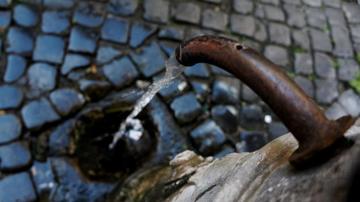 Originally installed in 1874, there are apparently more than 2500 of them... the Nasoni (Big Noses) supply fresh water to the public in Rome. The nickname was given because of their spouts' resemblance to a larger than normal nose. Within the Aurelian walls of Rome there are over 250 of them for your use. And have no fear... this water is perfectly fine for drinking--cold and fresh. In fact, using the nasoni is a great way to save on price gouging that goes on with refreshment street vendors, who charge overly high prices for bottled water. Trust me, it can be very hot and humid in Rome--even in the "cooler" spring and fall. Never go anywhere without a water bottle. Filling your own, reusable sport bottle is the way to do it in Rome. Don't waste money on bottled water. 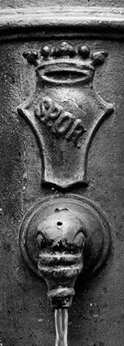 The nasoni are beautifully designed. The 200 pound, cast iron fountains stand about 3 feet tall, with distinctive spouts supplying a continuous stream of potable water. That's right, it flows all the time. Romans call it l’acqua del sindaco (the mayor’s water), since the government maintains the water flow. The older nasoni have a dragon's head at the end. Newer ones have a smooth torch decoration. Some older ones have three spouts while most have one. Please don't be put off by the rust or minerals built up at the base of the nasoni--the water is perfectly pure. All of the nasoni bear the shield of Rome with SPQR emblazoned on it. This is from the Latin phrase from Ancient Rome: Senātus Populusque Rōmānus (The Roman Senate and People). Today, this is the official emblem of the modern Roman government. 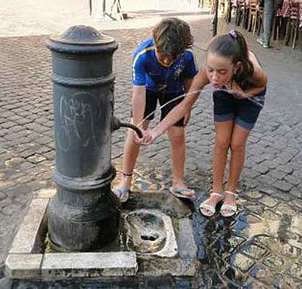 The nasoni also have a little known secret--at least tourists don't seem to know about it... On top of the spout (the nose) there is a small hole that can turn this faucet into a drinking fountain. The trick is holding your hand (hopefully clean) under the open spout, plugging it up. This forces a little water jet to pop out of the small hole on top, allowing you to drink as you would from a modern drinking fountain. (It's customary to rinse your hands before doing this in an effort to keep the spout clean.) Just hold your hand steady as you drink, or you might get sprayed in the face! Watch the cute video below... this bellissima bambina explains it so well. Roman pooches really appreciate lapping up a cool drink Here is a LINK to an interactive map of Rome that can help locate nasoni. There are also over 1000 fontanelle (drinking fountains) scattered around Rome
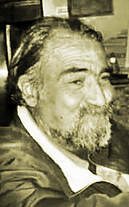 Schillizzi Schillizzi Enzo Schillizzi (b 1955 - d 2009) lived in the small Albanian-Italian village of San Costantino Albanese above the banks of the Sarmento River. The artist spent almost all his life in this small village just outside of Potenza, painting the local life and culture in murals all around the area. His work focused on the cultural symbolism of arbëresh tradition and folklore, especially on religious rites, for example, illustrating Nusazit, the pyrotechnic puppets of the saints day of San Constantino Albanese. Proud of the region's heritage, he recorded his impressions of the romantic and violent history of Basilicata and the briganti, robber/rebels who ran rampant during the post-unification period if Italy. Other subjects were his own interpretations of of painters such as Velasquez and Picasso. Some works are childlike, with indeed a Picasso-esque loose hand, while others show his extraordinary skill as a draftsman. After his untimely death, in July 2009, an effort has been made to research, document and restore and preserve his wonderful murals in addition to paintings privately owned. His colors often remind the viewer of the muted and natural palette from Basilicata itself--wheat, the varied tones of greens from the mountains and valleys, and the more vibrant colors of sky and flora. This research has been possible through the efforts of family and friends, who helped to identify and search out several paintings and gain permission of the owners to allow photographing them for posterity. Despite his works being dispersed in various places, a significant number still remain in San Costantino in private collections houses and in public spaces. Some his more complex works remind me of the work of Mexican muralist Diego Rivera while others have a mix of abstract and cubism in their compositions. After seeing his work, I'm convinced that his imagery would be well suited to ceramics and mosaic tiles. The town of San Constantino is blessed to have much of his work on public display, honoring their wonderful heritage. --Jerry Finzi With a commanding view of the Amalfi Coastline, the Auditorium Oscar Niemeyer in Ravello is balanced on its perch at a height of 1200 feet above the sea below. Before it was built, the "City of Music" (as Ravello is called) featured several beautiful outdoor venues--but none with more than a hundred seat capacity. Villa Rufolo, Villa Cimbrone, Piazza Duomo and Piazza San Giovanni del Toro all offered concerts, dance performances and plays. But Ravello desired a new, dynamic structure, allowing it to extend the concert series all year round to a greater number of fans and admirers. 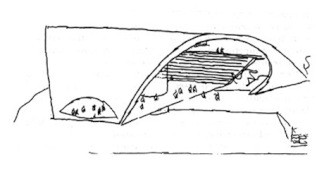 The project was assigned to the famous Brazilian architect Oscar Niemeyer who delivered his plans on September 23rd 2000, after only seventy days of work. From the outset the architect found himself in front of problems related to natural unevenness of the terrain: "... the uneven ground, narrow with a very strong transverse orientation. Hence the initiative to build a model." ... " I did not think an expensive operation involving an unnatural development of the land was necessary, so I took as a starting point the exact inclination of the parterre and the project started to take its present shape". Niemeyer died at 105 years old in 2011, one year before construction was completed. 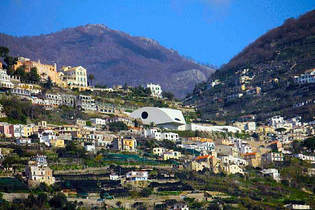 The architecture of Ravello has Roman and Medieval roots and is strongly characterized by architectural elements typical of such periods, such as vaulted ceilings, terraces, columns, classical statuary, arches, and formal gardens. One would think that the first obstacle to overcome was just to design a structure that was not in conflict with the architectural identity of Ravello and the Amalfi Coast. In reality, the Auditorium is an assault against the traditional lines of architecture. It is a cornerstone in aesthetic and cultural modernization of the countryside, jumping out of the surrounding environment with its curved lines and the blinding white color. The shape of the one side of the structure reminds one of the eyes painted on the prows of fishing vessels harking back to the time of the Greeks. Others might think the building looks like a large bird about to fly from its nest to soar the coastline below, or its shape like the wing of an obese jetliner. 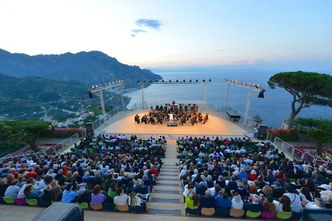 A competitor's view: A concert at Villa Rufalo A competitor's view: A concert at Villa Rufalo The Auditorium is accessed by an oblong square, which allows its visitors to enjoy, at the same time, the amazing landscape and view of the sea. From a vantage-point from above the large glass entrance, one can see the mountains' reflection. The main concert hall defies the natural slope of the land... the orchestra stand and the foyer are projecting over the cliff without a visible support. "It's not the perfect angle that attracts me, and not even the straight, hard, inflexible man-made one. What really attracts me is the free and sensual curve. The curve that represents the meeting of the mountains of my homeland, the figure of a beautiful woman, the clouds of the sky and the waves of the sea. The same curves which create the Universe. The curved Universe of Einstein. " (Oscar Niemeyer) 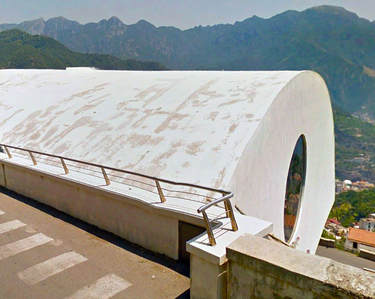 Really? This roof is only 5 years old Really? This roof is only 5 years old There has been--and still is--controversy about the design and placement of the Auditorium. For one thing, the architecture sticks out of the landscape and surrounding architecture like a sort, bright white thumb. Some complain that Neimeyer didn't design the structure to take full advantage of the amazing panoramic views of the coastline below, leaving only the large windows the the left of the audience, a rather low and narrow "eye" window situated right behind the performers, and a round window too high for anyone to see much of a view. The room--acoustically speaking--is a very difficult one, in terms of producing the best sound for the audience's pleasure. Some experts claim it is flawed, while audiences suggest the opposite. First of all, it's not symmetrical... the floor on the right side extends further from the audience than the left side. The sound is no distributes equally to all seats (the center seats are louder than the ones along the side). Another issue with its design is parking. Although it contains a lower level parking garage, there are only 107 parking spaces, some argue not enough for the 400 seat auditorium. There are also problems with the daily running of the venue... cafes being closed for no reason, people still entering the auditorium 20 minutes after a concert has started, etc. There are also some signs on the smooth, curved surface of the roof having many patches in it... surprising for such a young structure. One wonders if the building will last for a millennia as others have along the Amalfi Coast. And if you visit the Auditorium during the months when there are no concerts scheduled, you can still see a feature film there. Bigfoot Junior is showing this week. --Jerry Finzi |
On AMAZON:
|

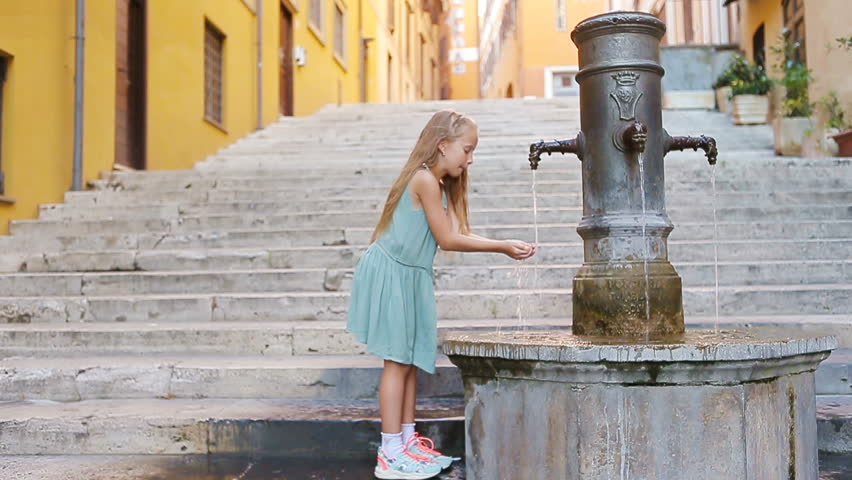
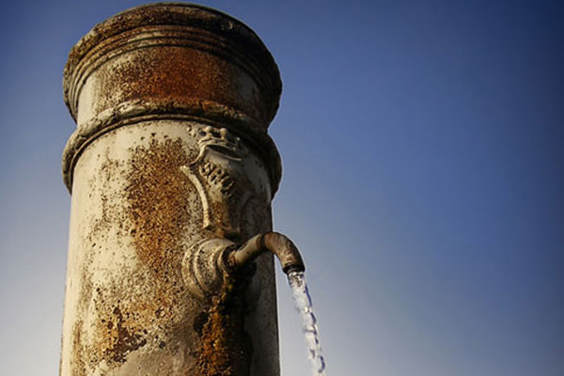
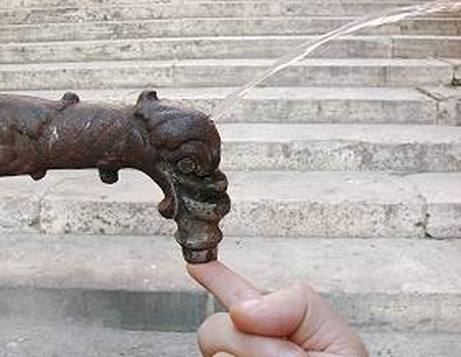
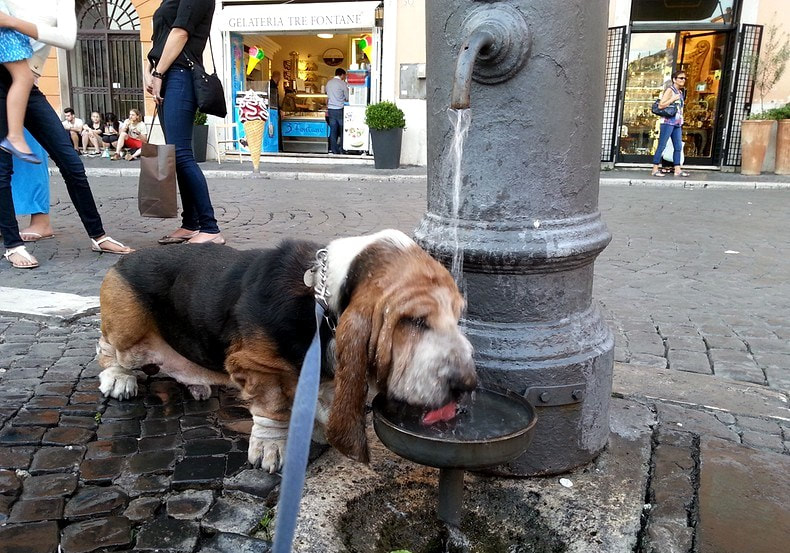
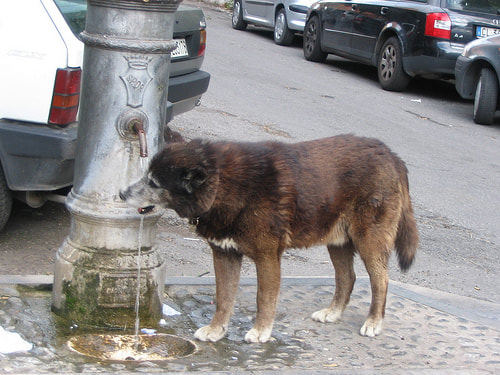
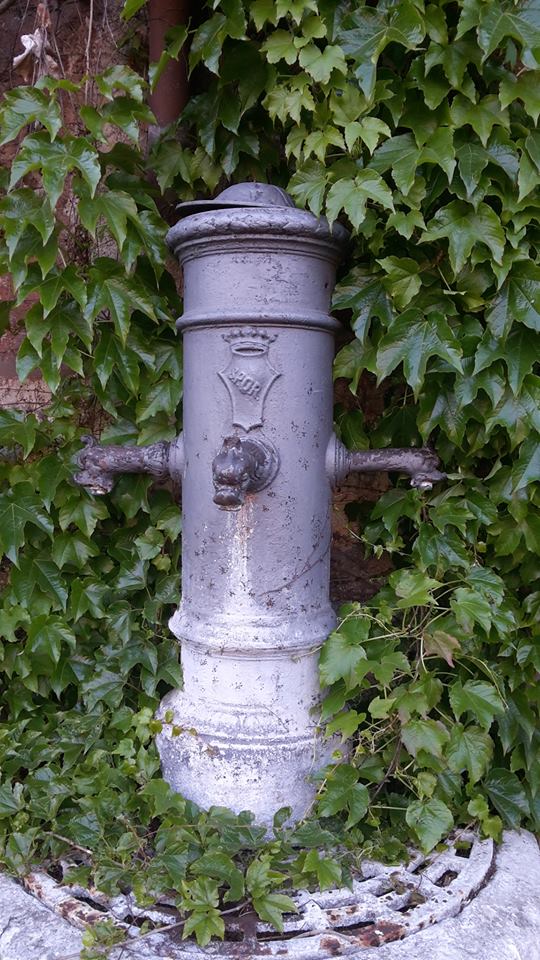
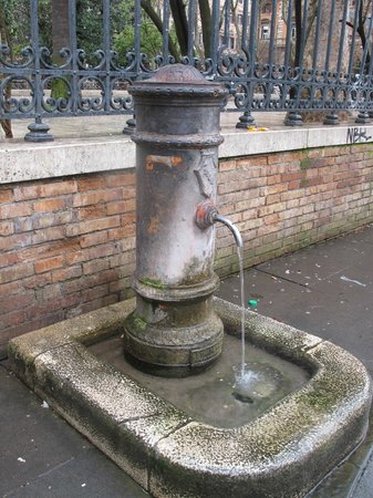
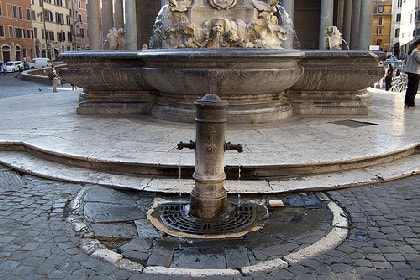
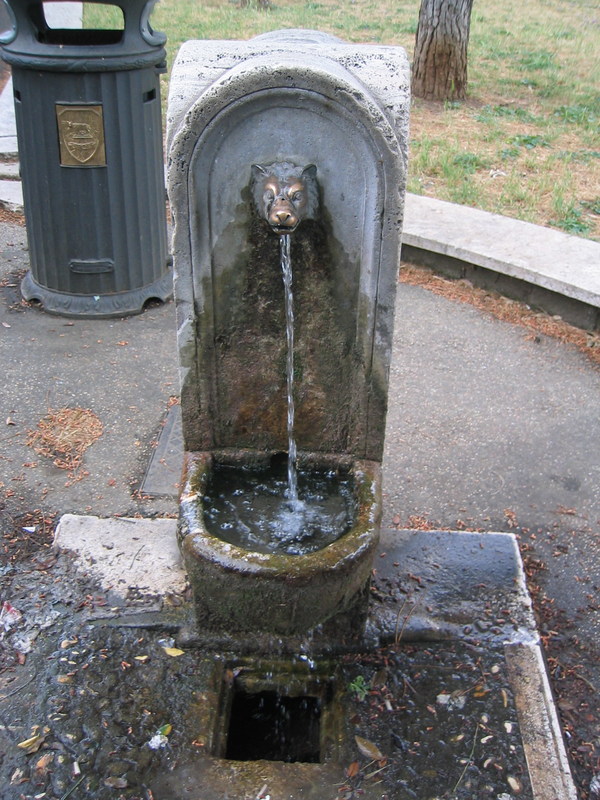

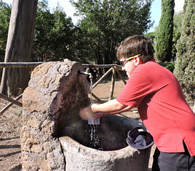
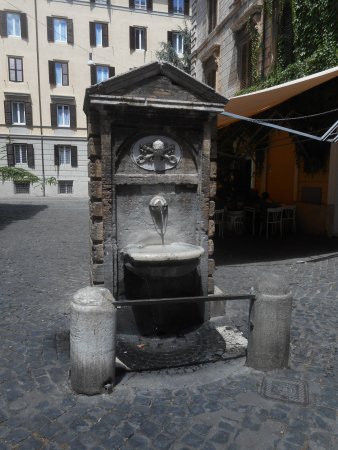
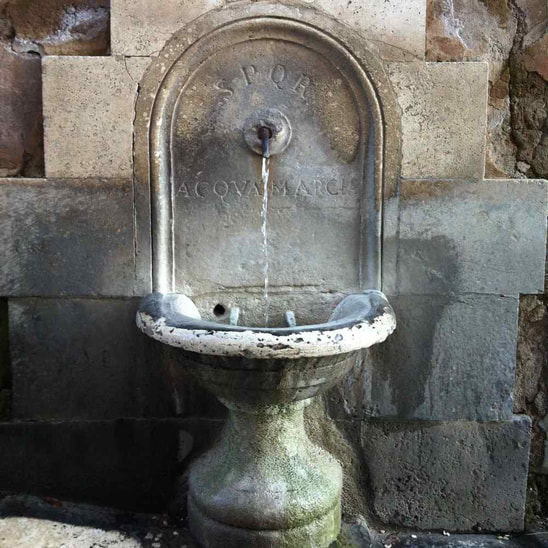
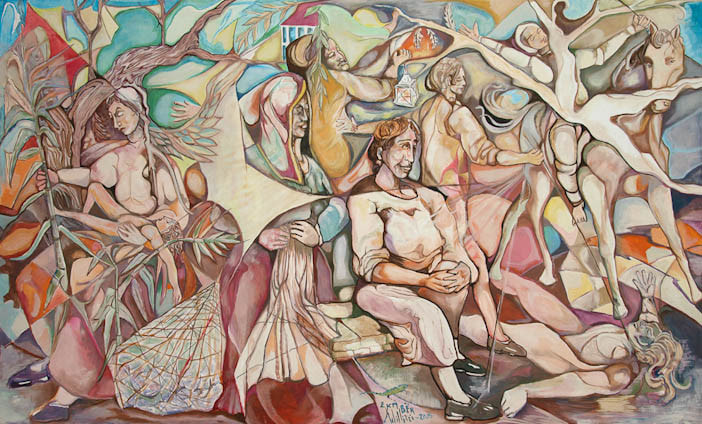
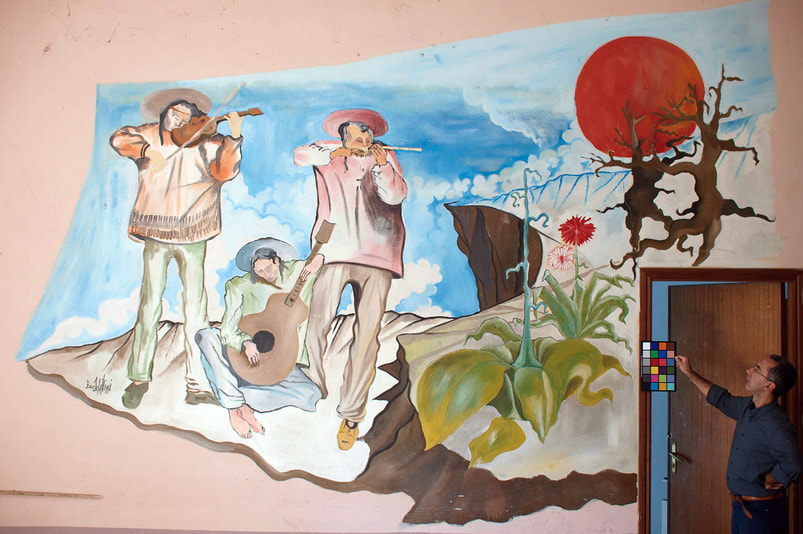

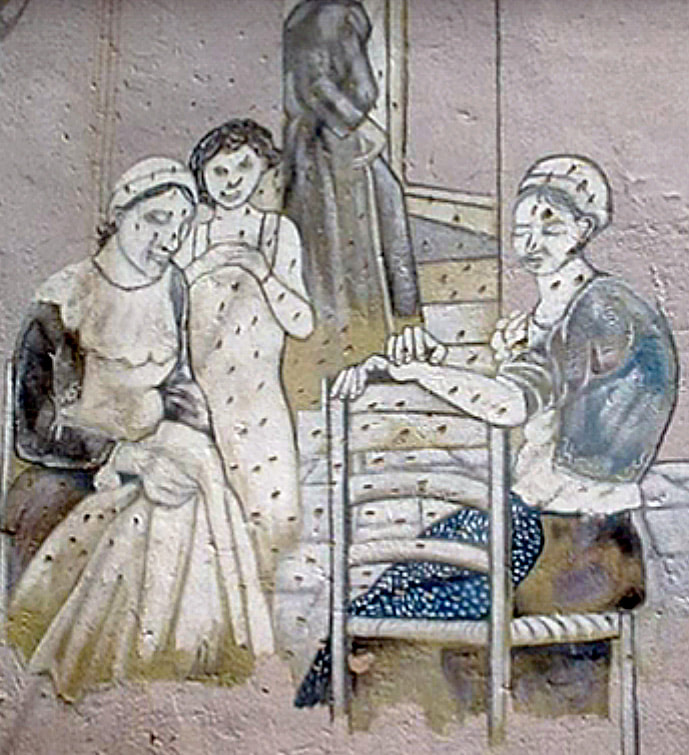
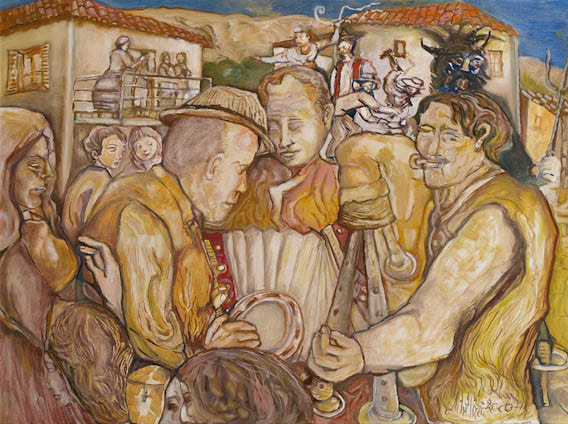
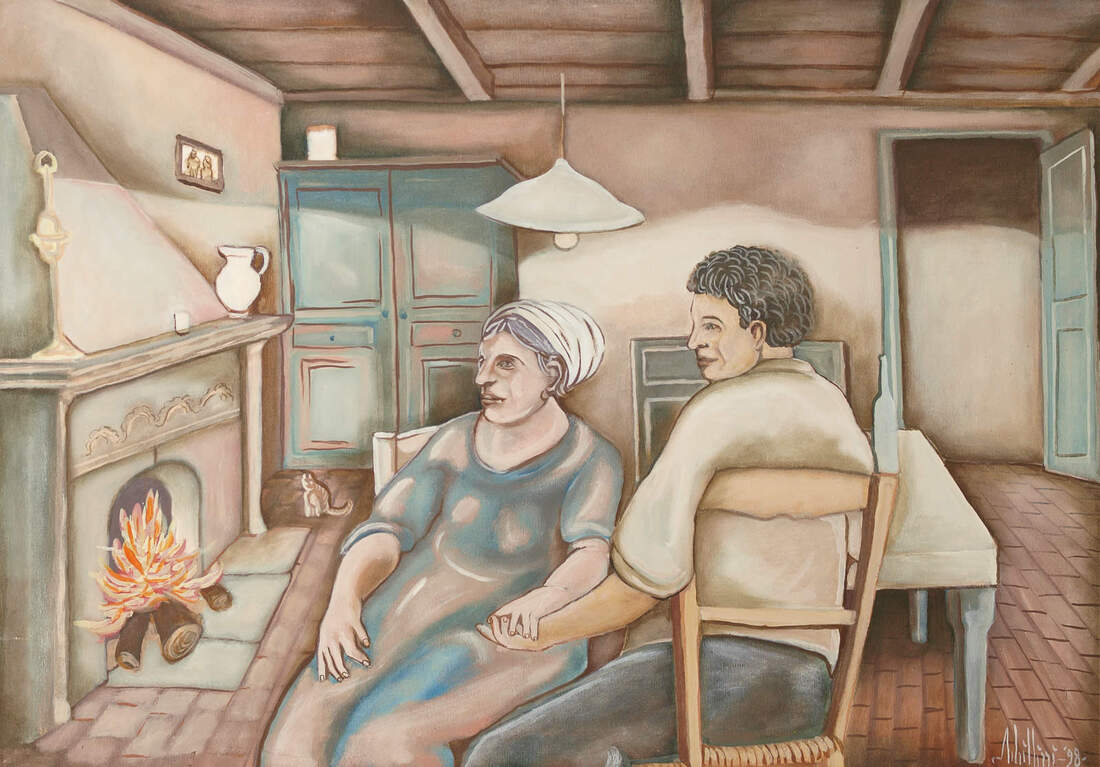
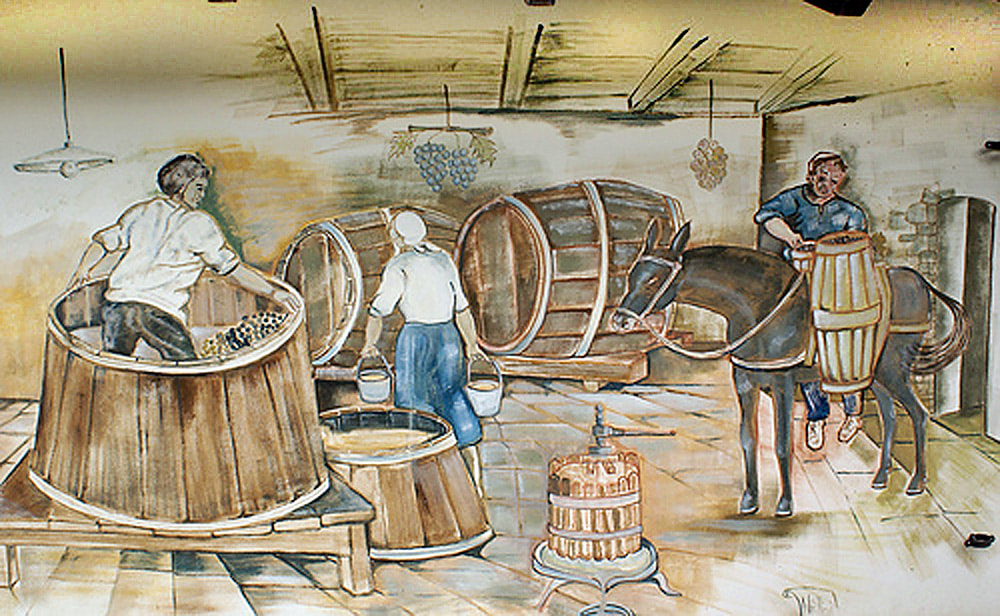
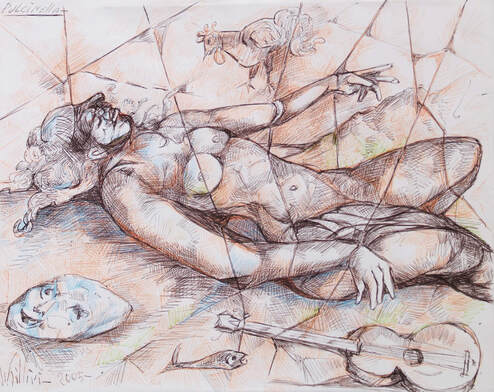
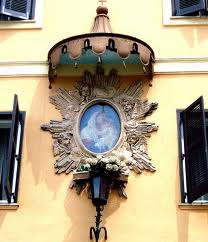
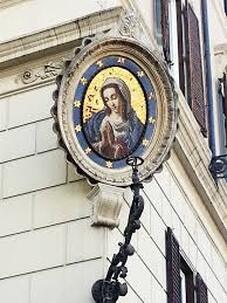
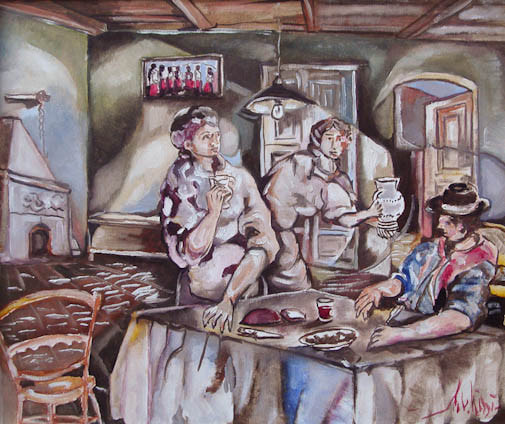
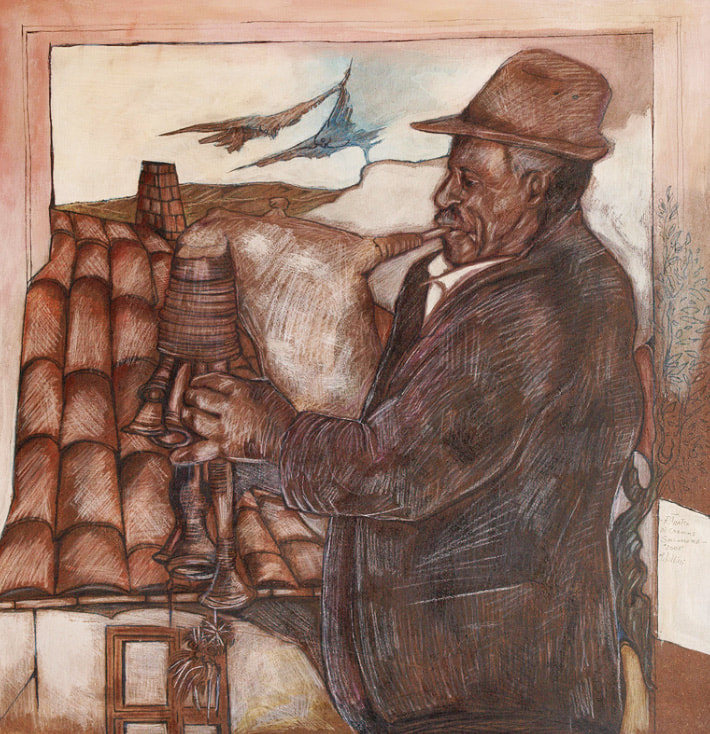
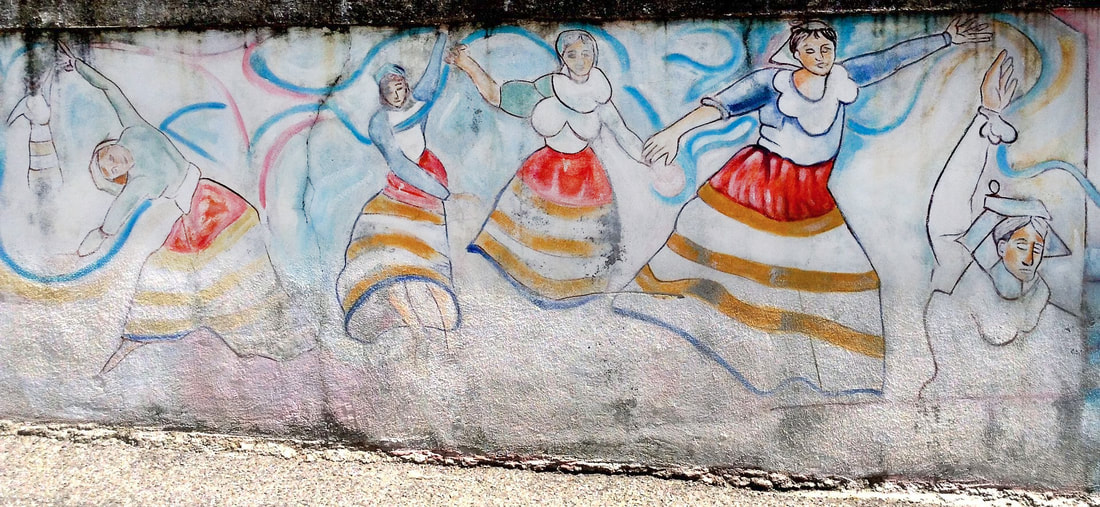
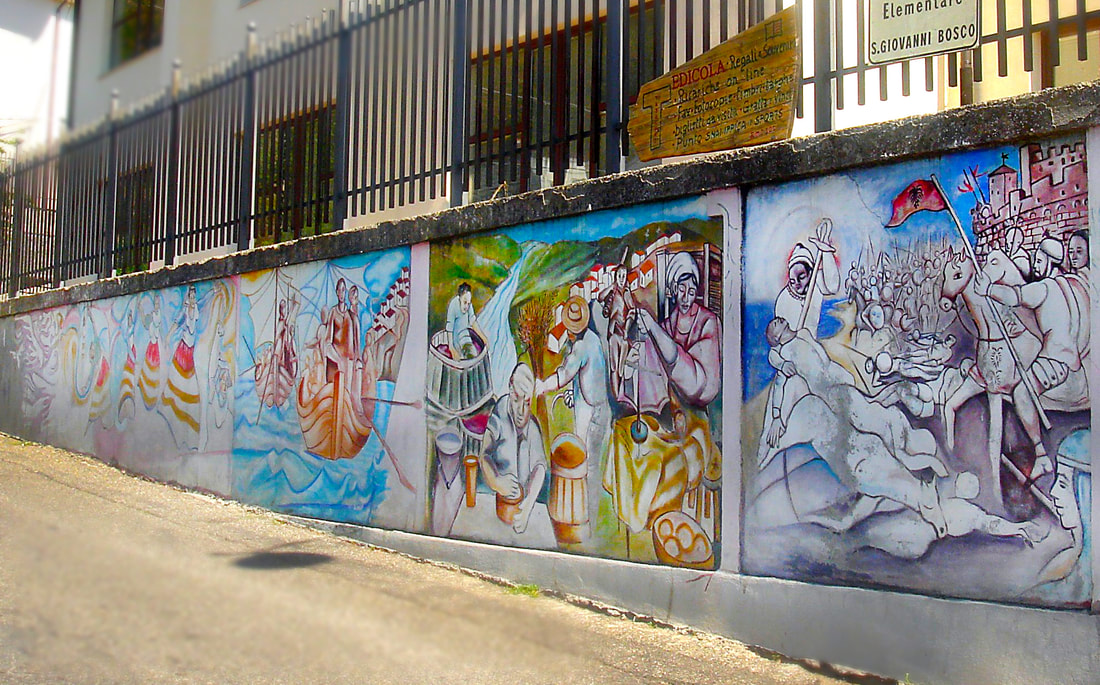
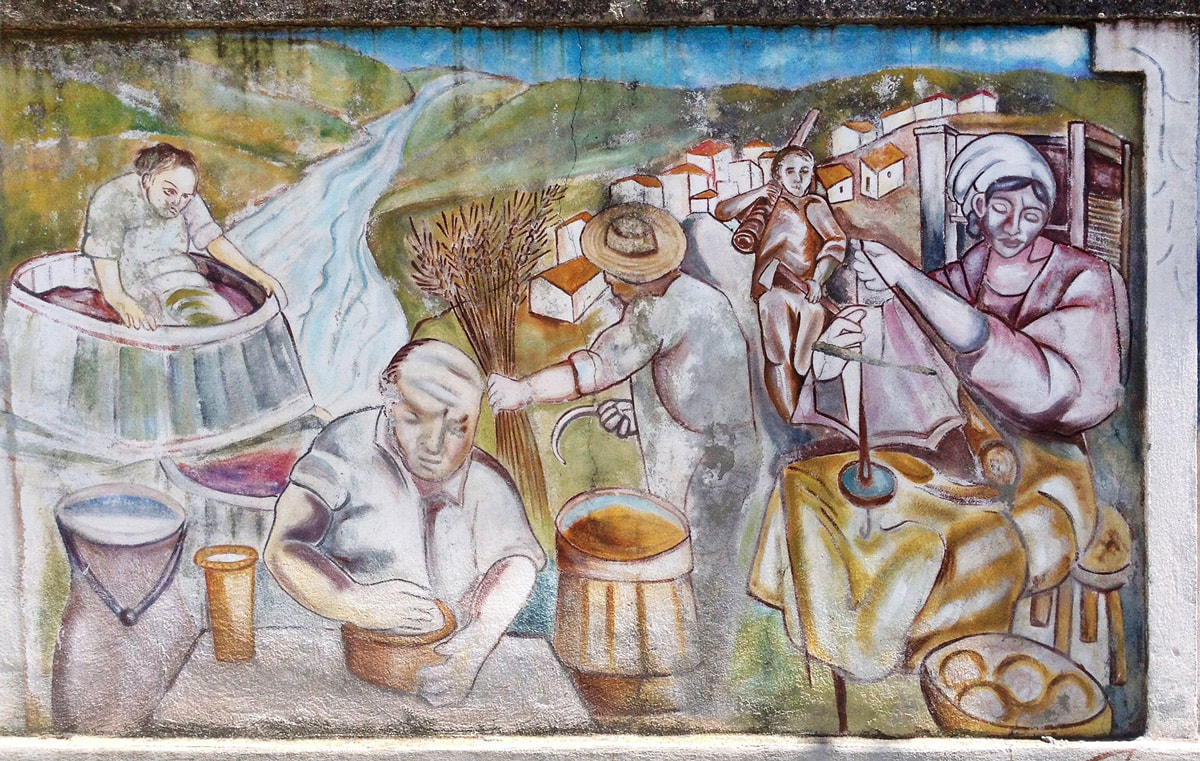
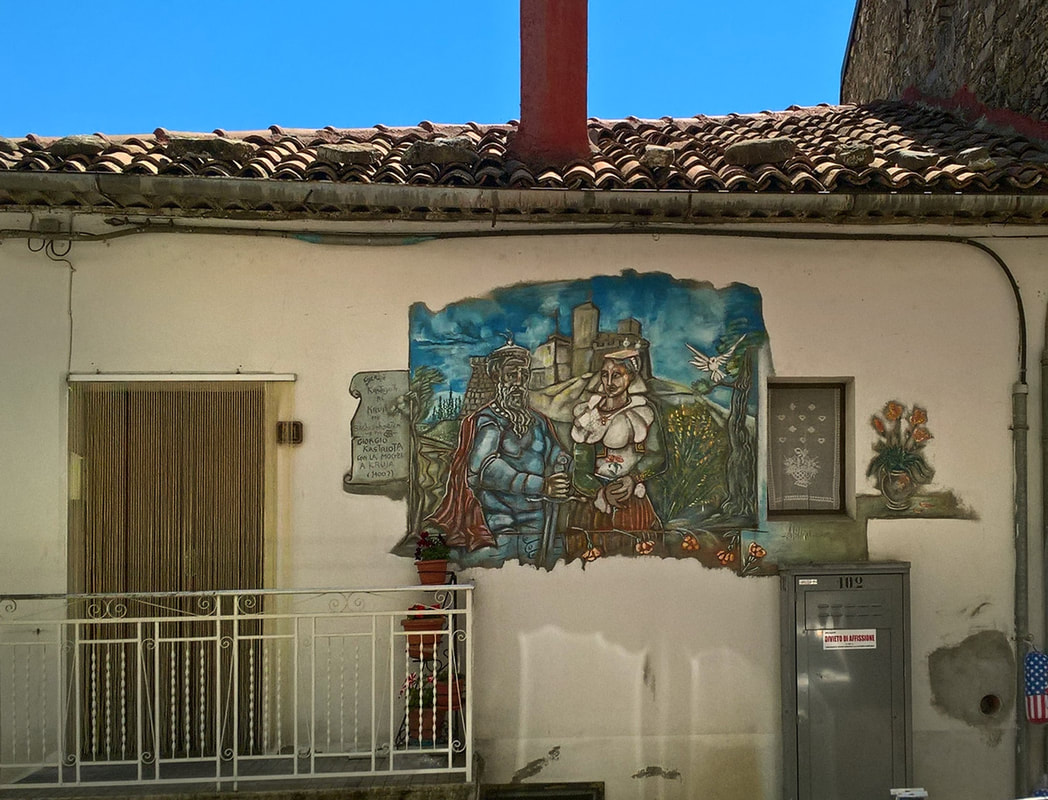
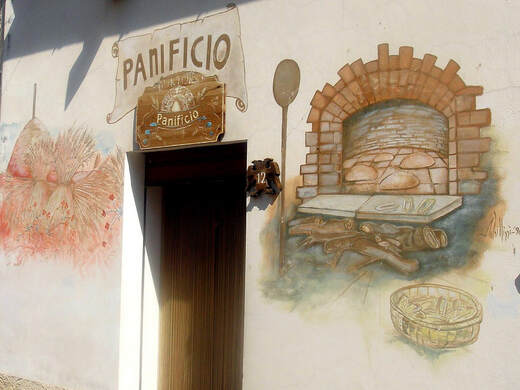
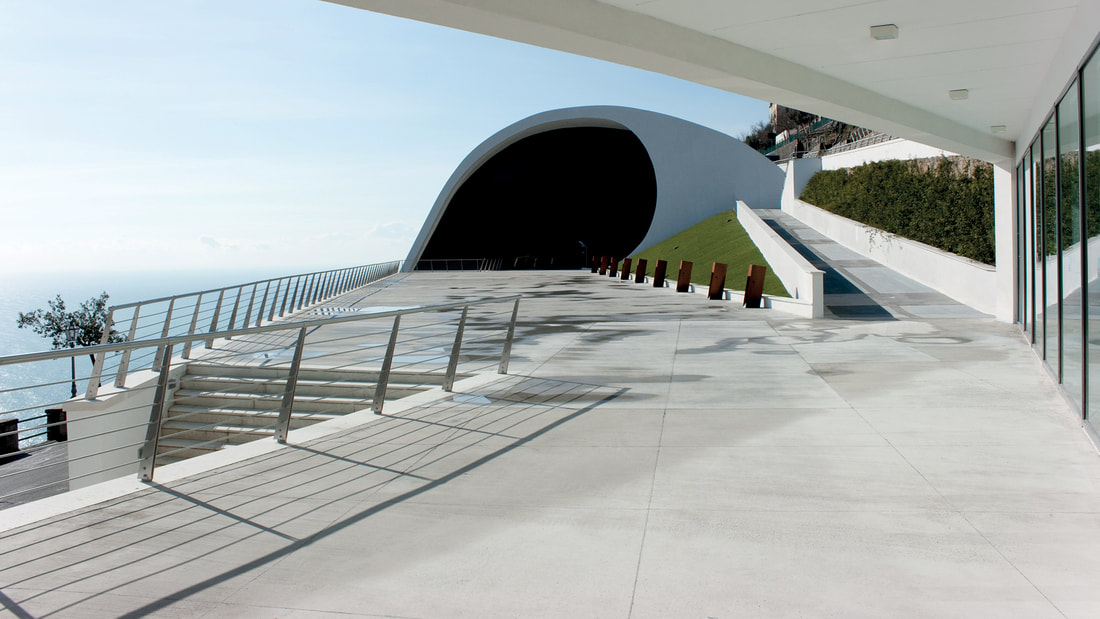
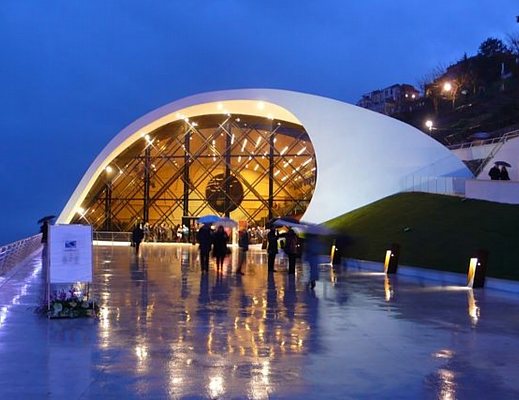
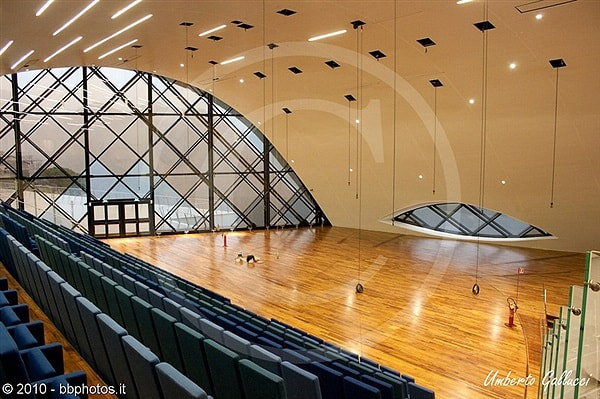
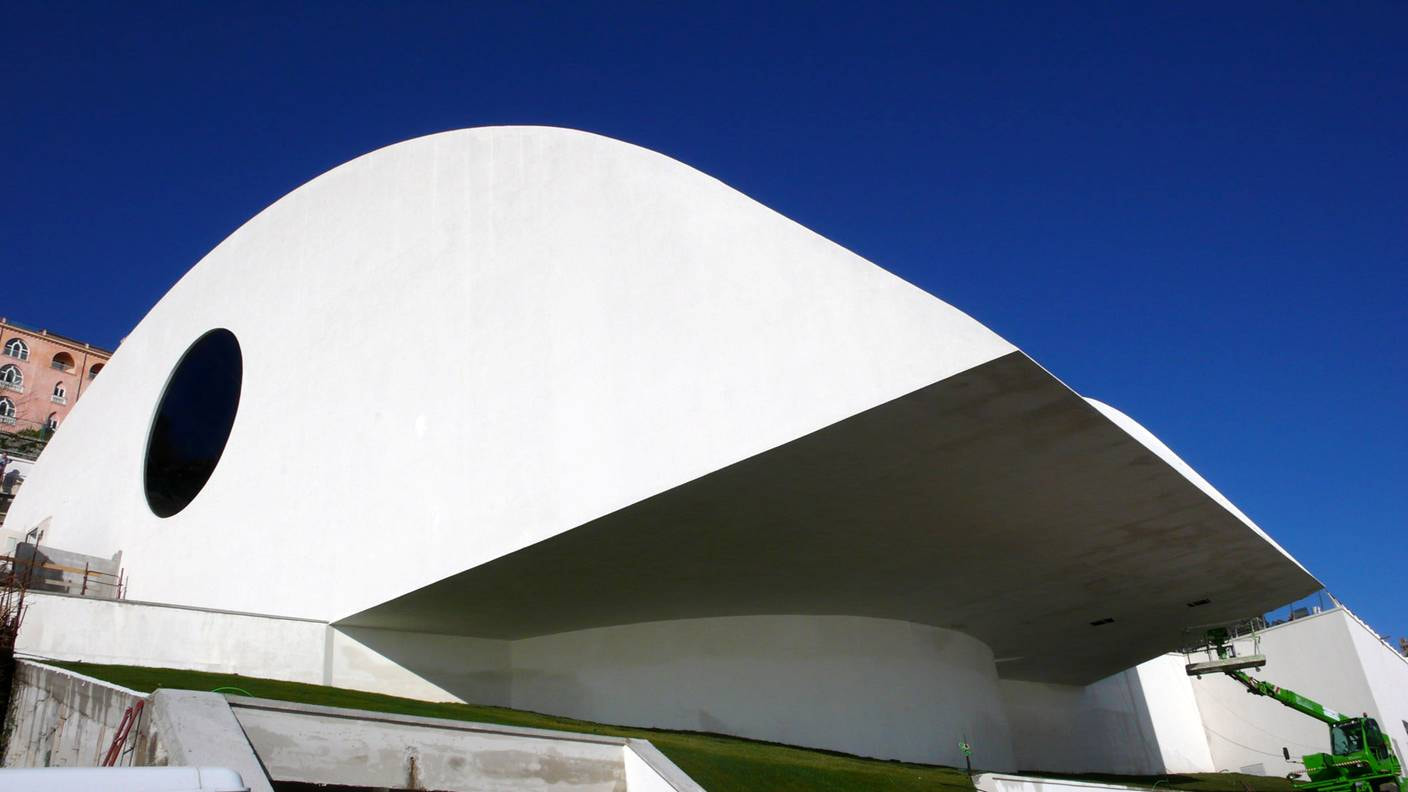
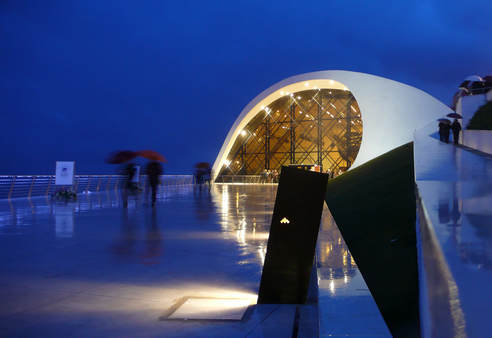
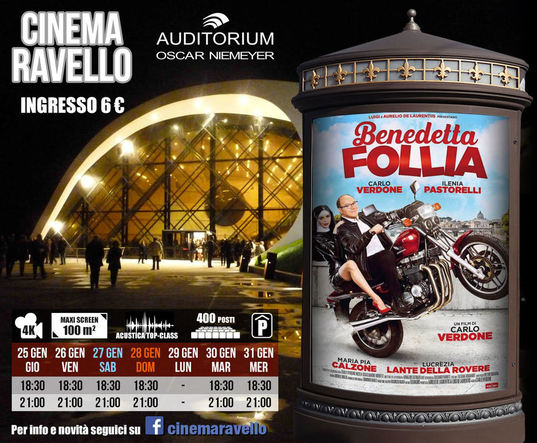

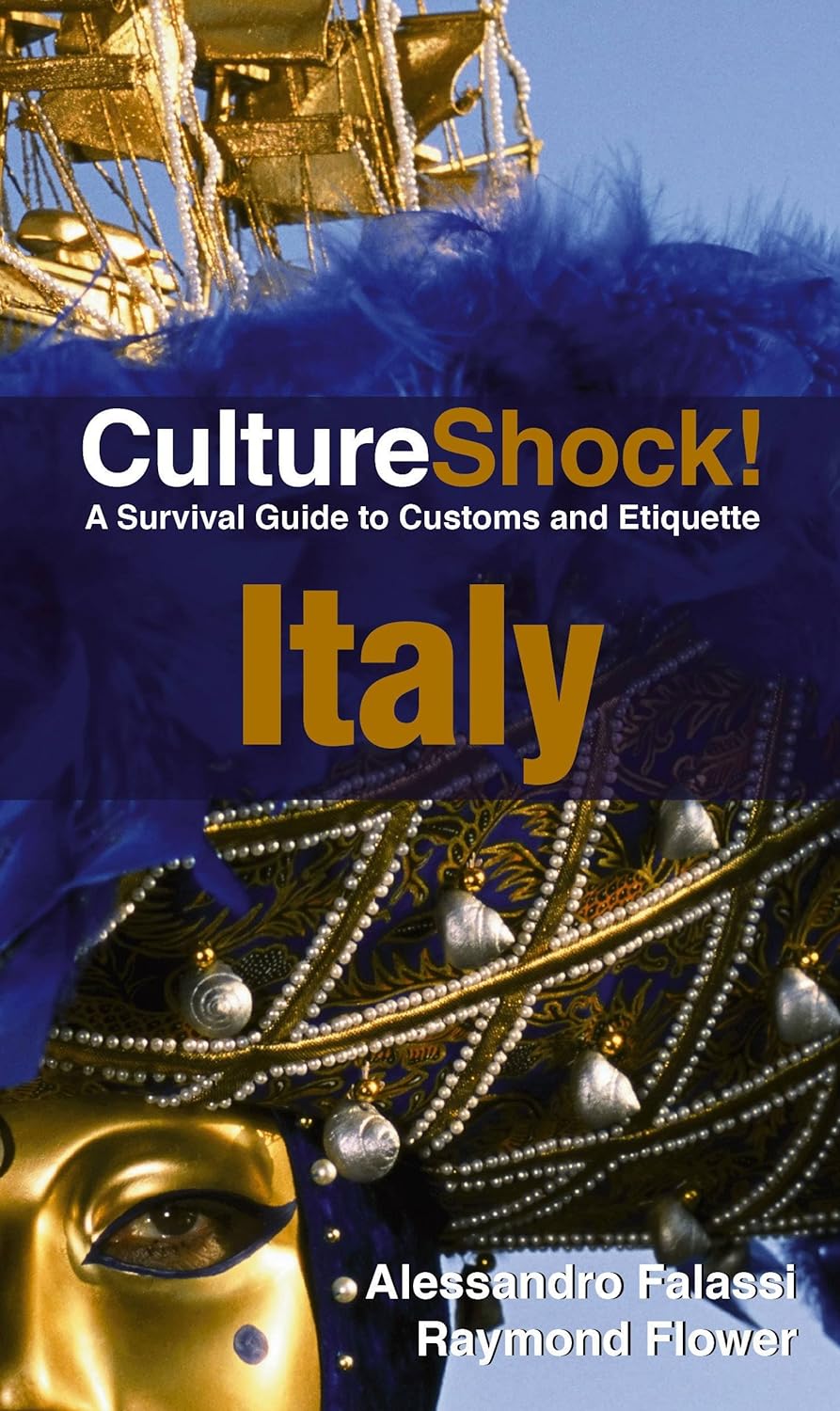
 RSS Feed
RSS Feed

